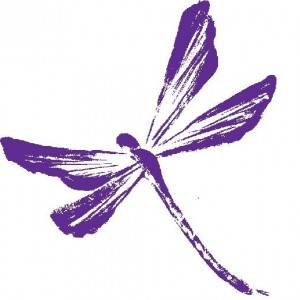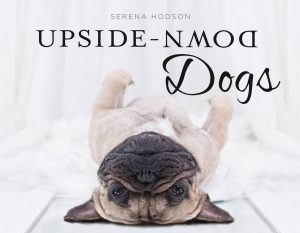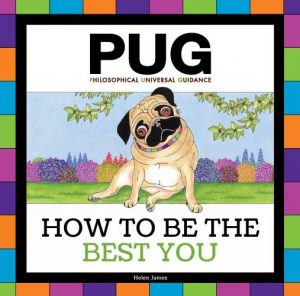Here we are in the middle of the silly season! All those end of year school presentation days and concerts, the will-I-or-wont-I go staff Christmas parties and the crazy, madcap race to finish all the holiday preparations and shopping without forgetting anybody! Hopefully some of our recent non-fiction reviews may help you find just the right book for that hard to buy for person in your life or maybe even the perfect holiday read for yourself.
Over the past two and a bit months 24 non-fiction books have been reviewed by 27 reviewers, highlighting not only the extremely diverse nature of general non-fiction books but also showcasing the magnificently diverse group of bloggers and reviewers that post to our site.
Perhaps we can tempt you with some health and fashion titles?
The Healthy Mummy Christmas and Entertaining Cookbook was a new-to-me program, but one that blogger Michelle was very familiar with and very keen to try out. I reviewed Michelle Bridge’s latest book, Keeping It Off, that discusses the problems we have when the diet ends and real life kicks back in. While Janine gives us a blast from the oh-so-glamorous past with Noeline Brown’s Living the 1960’s – ‘full of nostalgia and wry amusement’.
Maybe coffee table books about cute dogs are more your thing?
Tracey happily shows off Upside Down Dogs (yep! It’s a thing!) by Serena Hodson while Debbish reluctantly gives us PUG: How to Be the Best You by Helen James. For someone not a fan of coffee table books or the self-help genre she provides a thoughtful, funny review about Philosophical Universal Guidance.
Women’s Issues were featured by Michelle with her review of Girlish by Alana Wulff ‘a vibrant journal filled with inspirational quotes, conversation starters and thought provoking messages that is sure to get your teen thinking that bit bigger.’ Not Just Lucky by Jamila Rivzi was reviewed by Jennifer. She says,
I’d recommend this book to anyone interested in contributing to more effective equality in the workplace, I think it is of most interest to young women who are about to embark (or who have just embarked) on a professional career. It’s important to recognise that there is usually a gap between what workplaces should be like, and how they often actually function. I think there needs to be more conversation about this gap and its causes. While effective change needs to involve both men and women, awareness at an individual level is a good starting point.
Cass tells us about Unbreakable: Women Share Stories of Resilience and Hope edited by Jane Caro,
These women might all be well-known and successful, but beneath that, they are ordinary women from ordinary backgrounds who have faced extraordinary challenges. And most importantly, they have not only survived, but flourished and grown stronger, and they now champion the rights of other women who follow.
State of the Nanny: Telling It Like It Really Is by Louise Dunham is not only about the very important issue of quality childcare for children (‘If you’re likely to make a significant decision about child care any time soon, read ‘ State of the Nanny.’), but according to Hazel, it should also be read by early childhood educators, economics and politics students as the book details ‘the reasons why respecting the role of nanny, pays off for the whole community.’
Australian studies and Indigenous history may be more your cup of tea?
Sue takes us back to 1998 and Carmel Bird’s The Stolen Children: Their Stories for a thoughtful look at some of the stories that emerged from the National Enquiry into the Separation of Aboriginal and Torres Strait Islander Children from their Families.
“There can,” she says, “be no disbelief; these are true stories.” This is why the stolen generations should be a compulsory part of Australian history curricula (Recommendation 8a). It’s also why, to progress reconciliation, we should keep reading and listening to indigenous Australians. Only they know what they need.
A contemporary award-winning book that continues this theme was reviewed by Nancy, Into the Heart of Tasmania by Rebe Taylor which she described as ‘a new history of Aboriginal Tasmania and the eccentric Englishman Ernest Westlake (geologist) and his hunt for man’s origins.’ Nancy also reviewed Position Doubtful by Kim Mahood ‘who uses archaeological grids as an intermediary between her map making project and observance of aboriginal paintings. She learns to read the desert landscape with skill. Mahood uses these skills to give her maps and paintings the visual shimmer of the desert breathing the Aboriginal essence into her works’ (reviewers highlights). It is always interesting to see how one of our overseas reviewers sees Australia and Australian history.
A broader cultural perspective might appeal to you more?
Australian Lives: An Intimate History by Anisa Puri and Alistar Thomson, reviewed by Janine, features,
a chronological spread of interviewees, spanning from one born in 1923 through to participants born in 1989. There are indigenous respondents, Australian-born respondents and participants from many other places: Bosnia, Batavia, Cairo, Malta and Sudan.
Mirror Sydney by Vanessa Berry received two reviews. Jennifer was captivated by
Berry’s journeys through Sydney, across the Cumberland Plain and towards the Blue Mountains, are about history. The journeys show changes in land use, and document (in their own way) dispossession. Dispossession? Yes. And not just of the original inhabitants. As land use in Sydney has changed during the twentieth and early twenty-first centuries, people in search of affordable housing are having to move further and further from the city centre.
while Tom found the book endearing but
lacking (in) an analysis of why these places have come to be what they are. It’s a pity, because it makes the stories a little disjointed. By not grappling with questions of cause and effect, Berry misses the opportunity for narrative drive. But the big criticism of this book can also be levelled at most history and travel writing: that it describes places well but not people. And it is people that make places, and make Sydney, come alive.
This is just a taste of the non-fiction books on offer this month. We hope we’ve helped you with your Christmas shopping or tempted you with your next holiday read. Links for all the latest general non-fiction reviews can be found here.
Seasons greetings and safe travels one and all, however you celebrate, or wherever you spend your time this summer. See you in January for our HUGE yearly wrap-up posts.
About Bronwyn: I have been a book blogger at Brona’s Books since 2009 and a bookseller (specialising in children’s literature) in Sydney since 2008. Prior to this I was as an Early Childhood teacher for 18 years in country NSW.
I joined the AWW team in 2015 as the History, Memoir, Biography editor. In 2017 I moved to the General Non-fiction page.
 I taught myself to read when I was four by memorising my Dr Seuss books. I haven’t stopped reading since.
I taught myself to read when I was four by memorising my Dr Seuss books. I haven’t stopped reading since.
You can find me on Twitter @bronasbooks and Litsy @Brona.









What a huge round up! A fabulous array of books too!
Thanks for mentioning Carmel Bird’s book Brona, it’s important to keep these stories in front of everyone. I’m intrigued by the different comments on Mirror Sydney, as I’d only just heard of it recently.
I’m reading it (slowly) at the moment & fall somewhere between the 2 I think so far. The concept is stronger than the execution so far.
Thanks so much for the mention Bronwyn, I really appreciate it 🙂 Great wrap up too, some terrific books listed.
Thanks for this, Brona. Will be looking our for your final review!
Enjoyed exploring Australia through books from the other side of the world….during November#AusReadingMonth @Brona’s Books.
Thanks for mentioning two impressive non-fiction books by very talented Australian women!